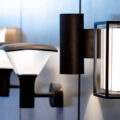On 1 October 2010, the government changed the L1 Building Regulations. The changes aim to reduce carbon emissions in new homes, and extensions to existing homes. The proposals include the use of low energy lighting such as LED light bulbs.
By 2016, the government wants new homes and extensions to emit zero carbon. Because LED light bulbs use less electricity than CFL lighting or incandescent bulbs, they have a key role to play in this strategy.
Since 2002, the government has set milestones for its zero carbon target. The goal of the latest L1 Building Regulations is to cut carbon emissions by 25% compared to the 2006 regulations, and by 40% compared to the 2002 regulations. The three figures from 2002, 2006 and 2010 are the Target Emission Rates (TERs).
The L1 Building Regulations addresses the failure to meet the TERs of 2002 and 2006. The government refers to this lack of success as the performance gap.
To close the gap, the new regulations cover issues such as cavity wall insulation, electric secondary heating, and the use of heat pumps and biomass fuel. They also refer to light fittings. The regulations oblige builders to ensure at least 75% of the fittings in a new home are low energy. LED light bulbs can make this a reality.
For home extensions, the rules are different. Builders must install light fittings for bulbs with at least 40 lumens per watt. LED light bulbs are the answer. An LED E27 candle shape bulb, for example, gives 220 lumens of light for just three watts of power. This works out as 73 lumens per watt.
If you’re in the market for a new home, or you intend to expand your current dwelling, bear the new regulations in mind. Discuss LED light bulbs with your builder and make sure your property complies with the new legislation.
And remember this isn’t just a legal issue. With LED light bulbs, you benefit from low energy costs, versatile lighting, and mercury-free bulbs.
Date: November 9, 2011
Tags: build building buying check extension home industry new news planning regulations.
Check L1 Building Regulations for new builds and extensions. Reduce carbon emissions with LED bulbs. Discuss compliance with your builder for low energy costs.




